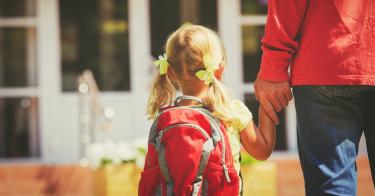Will your neighborhood school open on schedule in the fall? The answer should vary by location, but some headline-grabbing declarations are prolonging the uncertainty for families and students.
And uncertainty leads to fear—an infectious state of mind best treated with a dose of common sense.
Special-interest groups encouraged educators to "scream bloody murder" if collective bargaining and significant new federal spending are not included in reopening plans. Neither of these conditions guarantee safe conditions for schools, and spreading panic is not a useful exercise.
Meanwhile, Dr. Anthony Fauci's role is to encourage caution, so no one should fault the National Institute of Allergy and Infectious Disease director for explaining the risks and rewards for different decisions. Yet this allows the media to take any conclusive statement and use it to prove their case. When Fauci says a vaccine is "the ultimate solution" and won't be ready by the fall, some are quick to say schools should remain closed.
However, he also said, "Situations regarding school will be very different in one region versus another." Local educators and health practitioners, then, must be the ones to decide when schools reopen—and make decisions based not on national averages but on the circumstances in their area.
Parents and educators should take an additional step and make their school's default position one that is ready to open on schedule, unless evidence suggests there are compelling health reasons not to do so.
>>>10 Key Education Recommendations for Reopening the K-12 Classroom
Schools should monitor updates to health guidelines and revise their operations and policies accordingly. For example, instead of asking students that have a fever to stay home for 24 hours after the fever breaks, he or she should stay home for three days, consistent with Centers for Disease Control guidelines. Schools also should plan to update their guidance as we learn more about the virus.
State lawmakers should not order school closures across the whole state unless data support a statewide concern. Superintendents and school boards should not close an entire district or individual school unless there is a significant outbreak in the immediate area affecting normal operations or a large percentage of students with COVID-19 warrants such action.
If selective dismissal or closure is necessary, the district should provide the highest level of disinfection and sanitizing available prior to school resuming. District officials should continue to work with the local public health departments to determine safe and appropriate resumption of school activities in the event of a dismissal or closure.
Likewise, families and educators should plan now for athletics, fine arts and extracurricular activities to resume and governing bodies should allow additional time in the summer to make up for lost instruction. If there is a significant outbreak, then school officials should consider limitations rather than widespread cancellation of events. For example, schools could limit athletic and fine arts events to student participants, school personnel, and their family members.
Students have already lost so much during the spring lockdown. For the physical and social-emotional well-being of students, enriching activities such as these should not be lost to fear. Administrators should consult with doctors, school nurses and health experts to determine appropriate modifications if a significant outbreak occurs.
Should there be a surge in infections, parents have the right to protect their children. Lawmakers and school districts should carefully suspend truancy laws to accommodate a parent's choice to keep a student home due to health concerns. Students with special needs or underlying health conditions should be reasonably accommodated through virtual or online learning if the situation is warranted.
Fauci told lawmakers that "we should be humble about what we don't know," which is sound advice. No one knows what the mortality rate or number of infections will be in August, but we should base our plans for resuming life on the idea that we will resume school in the fall unless there are compelling reasons not to.
A return to school is necessary for economic recovery, and education is also the key to upward mobility and better long-term health. Common sense must prevail.
This piece originally appeared in The Bismarck Tribune




